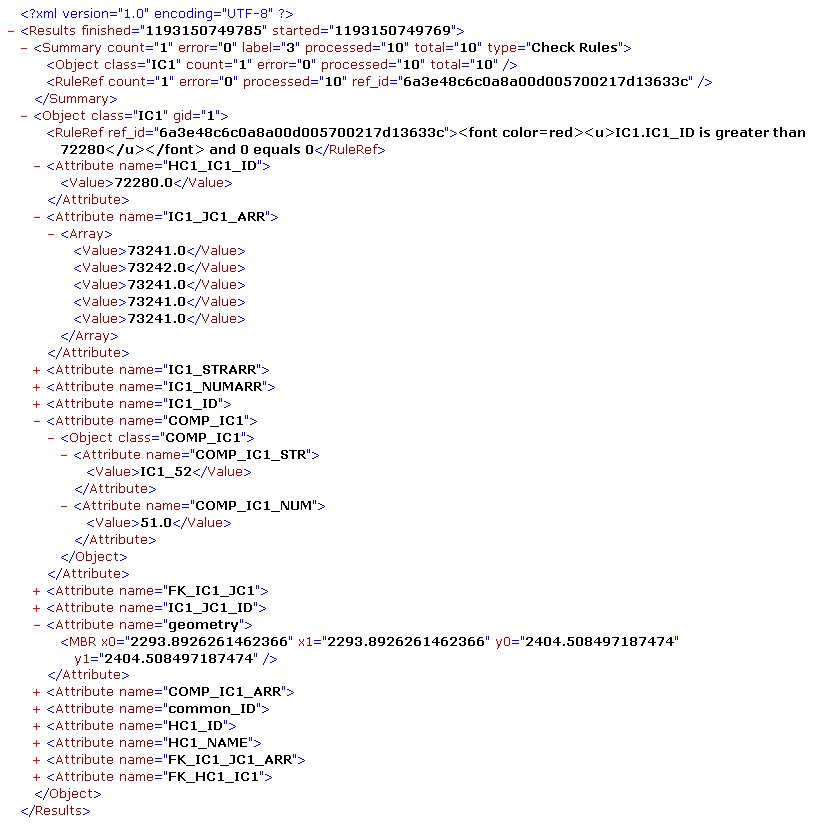The XML report is a complete representation of the results from all Check Rules tasks. For example:
<Results>
<Summary>
</Summary>
<Object>
<Attribute>
<Value>
</Value>
</Attribute>
<Attribute>
<object>
</Attribute>
<Attribute>
<Array>
<Value>
</Value>
</Array>
</Attribute>
</Object>
</Results>
There are six types of elements: Results, Summary, Object, Attribute, Value, and Array:
· Results: The results element contains the system times for start and completion of the report
· Summary: The summary element gives the totals for objects processed.
· count: Number of objects that failed the rule
· total: Total number of objects in the dataset
· processed: Number of objects processed
· error: Number of objects that could not be processed because of an unexpected error
· label: Internal 1Integrate ID for the rule
· Object: The object element is a container for attributes. The element identifies an object that failed the rule check, a foreign key, and a composite attribute.
· class: name of the class of this object
· gid: unique number to identify this object for references elsewhere in the XML
· Attribute: The attribute element defines each attribute you selected in the internal schema mapping. There are five ways that attributes are represented:
· Simple attributes contain a value element only
· Arrays contain an array element followed by a number of value elements
· Composite attributes contain an object element
· Foreign keys contain an object element referring to the foreign key class
· Objects referenced elsewhere in the XML have a class reference and ID
An attribute is referred to by name of the attribute. Attributes that have already been referenced elsewhere in the XML also use class_ref (name of the class referred to in the object element) and gid_id (unique number that identifies this object in the XML.)
· Value: The value element displays the content of an attribute
· Array: The array element identifies an attribute as an array. The XML contains a value sub-element for each item in the array.
